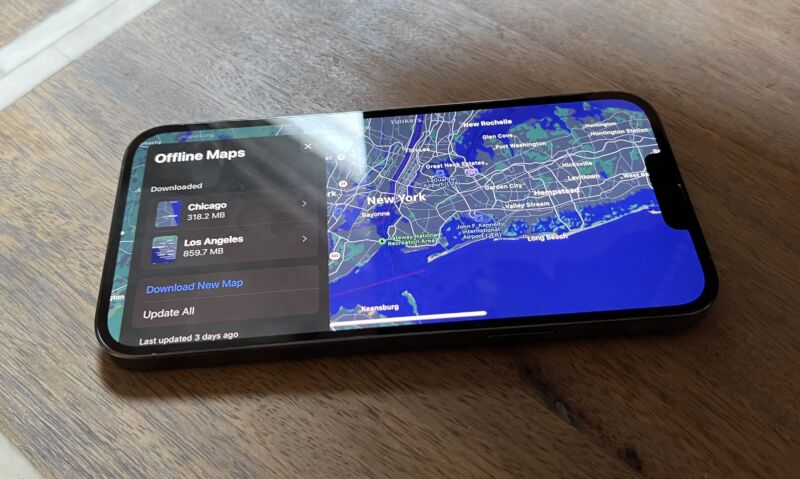[ad_1]

Samuel Axon
Apple Maps has seen a significant comeback story since it first debuted to near-universal panning in 2012, but anyone who has also used Google Maps can even now name a bunch of handy features that Apple Maps just can’t do yet.
When iOS 17 releases this fall, though, one of those gaps will get covered. Apple will introduce downloadable maps—a vital feature for many users and one that Google has offered for years.
The iOS 17 public beta dropped this week, so users who aren’t part of Apple’s developer program can now access the feature for the first time—though I don’t generally recommend installing beta operating systems on your daily drivers, of course.
It took me a few years to consider switching to Apple Maps, but I finally did in 2019 after Apple’s incremental improvements. Still, there are some features (like offline maps) that have led me to keep Google Maps installed for occasional use. I’ve been using the developer beta of iOS 17 for a couple of weeks now, so this seems like a good time to compare how the feature works on an iPhone running either Apple Maps or Google Maps.
How it works
Downloading and using offline maps in Apple Maps is simple, and it closely mirrors the process on Google Maps.
To start, you can simply look up a city or a place and a “download” button will appear next to the buttons for getting directions or going into flyover mode. Alternatively, you can tap on your user picture to open up the app’s options, then tap offline maps, then tap “download new map.” There are a few other settings here, like toggling whether maps download over mobile networks or just Wi-Fi, whether to use downloaded maps even when you have an Internet connection, and whether updates should be automatic. There’s also an “optimize storage” button, but it’s not entirely clear as a user what it does.
-
To select which area to download, you get a rectangular selector that you can resize as you wish.
Samuel Axon -
In this offline maps options menu, you have a few toggles, as well as a list of individual maps you’ve downloaded and a prompt to add more or update all the existing maps.
-
Tapping on an individual map in the options panel brings up this view, which tells you when the map was last updated and lets you resize or rename it.
Samuel Axon -
You can get and view turn-by-turn directions within offline maps.
Samuel Axon -
For the most part, the map looks just as detailed as it does in online mode.
Samuel Axon -
Here’s what business pages look like; they’re missing some of the frills of their online counterparts, but they have all the key information.
-
For comparison, here’s the same page in online mode.
Samuel Axon
Once you decide to download a map, you can move or resize a box on top of the map to decide where to capture it. The map will download, and that’s all you have to do to get going. When you’re navigating that area without a cellular data connection, Apple Maps will default to the offline map. You can get directions, search for businesses, or access location pages.
The location pages have key information but lack detailed user reviews and photos, and they don’t have the editorial content (like “best X in the city” type listicles) that you find in Apple Maps in online mode.
All told, Google Maps users will feel right at home with this feature. There are a couple of differences worth mentioning, though.
[ad_2]
Source link

